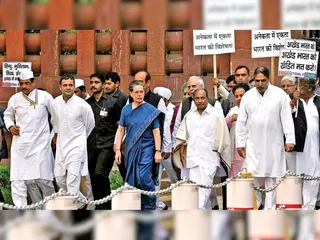The Minerva Mills Ltd. v. Union of India case, decided in 1980, stands as a cornerstone in Indian constitutional law. It solidified the 'basic structure' doctrine, first articulated in Kesavananda Bharati v. State of Kerala (1973), and further refined its application regarding the limitations on Parliament's power to amend the Constitution.
The case arose from challenges to the 41st and 36th Amendments to the Constitution. The 41st Amendment sought to restrict judicial review of constitutional amendments by adding Clause (4) and (5) to Article 368, effectively limiting the power of the Supreme Court to strike down amendments. The 36th Amendment inserted Article 31-C, which empowered the state to make laws affecting fundamental rights (specifically, the right to property) without being subject to judicial review. These amendments were seen as attempts to curb the judiciary's role in safeguarding fundamental rights.
The Supreme Court, in a landmark judgment, struck down both clauses of the 41st Amendment as well as Article 31-C. The Court emphatically reiterated the basic structure doctrine, holding that Parliament's power to amend the Constitution was not absolute. It cannot alter the essential features or the basic structure of the Constitution. The Court explicitly mentioned several features as integral to this basic structure, including:
- Supremacy of the Constitution
- Separation of powers between the legislature, executive, and judiciary
- Federal structure of the Indian Constitution
- Independent judiciary
- Rule of law
- Secularism
- Freedom and dignity of the individual
The judgment in Minerva Mills clarified that the power of judicial review is an essential part of the basic structure. The Court emphasized that a balance must be maintained between the legislature's power to amend and the judiciary's power to safeguard the fundamental rights and the basic structure. If the judiciary cannot review constitutional amendments, it effectively renders fundamental rights nugatory.
The decision in Minerva Mills underscored the importance of judicial review in upholding the principles of democracy and the rule of law. It provided crucial safeguards against potential abuses of power by the legislature, ensuring that the fundamental rights enshrined in the Constitution remain protected. The case cemented the basic structure doctrine as a crucial component of Indian constitutional law, preventing the complete erosion of the fundamental principles enshrined within the Constitution.
The impact of Minerva Mills continues to resonate in contemporary legal discourse. Subsequent cases have used the basic structure doctrine to evaluate the constitutionality of various amendments and laws, demonstrating the enduring importance of this judgment in shaping the course of Indian constitutional law.
In conclusion, Minerva Mills represents a significant milestone in the evolution of Indian constitutional jurisprudence. Its articulation and reinforcement of the basic structure doctrine profoundly impacted the relationship between the legislature and the judiciary, ensuring the continuing vitality of the Indian Constitution.




























































